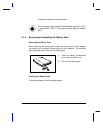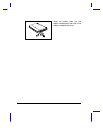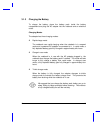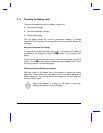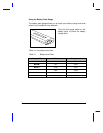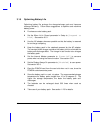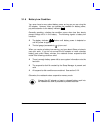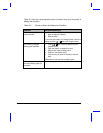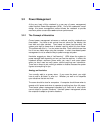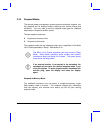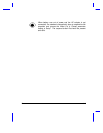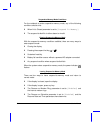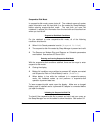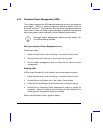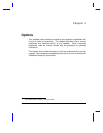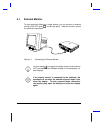
Power 3-11
3.2 Power Management
At the very heart of this notebook is a new way of power management
called Heuristic Power Management (HPM). Part of the notebook’s overall
design, this power management method allows the notebook to provide
maximum power conservation and maximum performance.
3.2.1 The Concept of Heuristics
Current power management schemes or methods used by notebooks are
timer-based. You have to set various time-out values for the display, the
hard disk and other devices. Then based on these fixed time-outs, the
system puts itself to sleep when it detects inactivity within this time frame.
The problem with this is — no two users are alike. Each individual user has
his or her own habits when using the computer. In short, timer-based power
management is not an effective way to power-manage a system.
Heuristics suggests an idea of “self-learning”. HPM allows the system to
power-manage itself depending on how you use the machine. In effect, the
notebook delivers maximum power when you need it and saves power
when you don’t need as much power, without requiring user intervention.
There are no timers to set, nothing to enable or disable, because the system
figures out everything for you.
Analogy on Heuristics
You normally walk to a grocery store. If you cross the street, you might
have to walk a bit faster, or even run. Whether you walk or run depends
upon situations that are not fixed.
The same should be true for computers. A computer should know when to
operate at full power and when to operate at anything less than full power.
Timer-based power management operates by a fixed set of rules which
cannot adapt to dynamic situations. Heuristic power management allows
the computer to adapt to dynamic situations.



